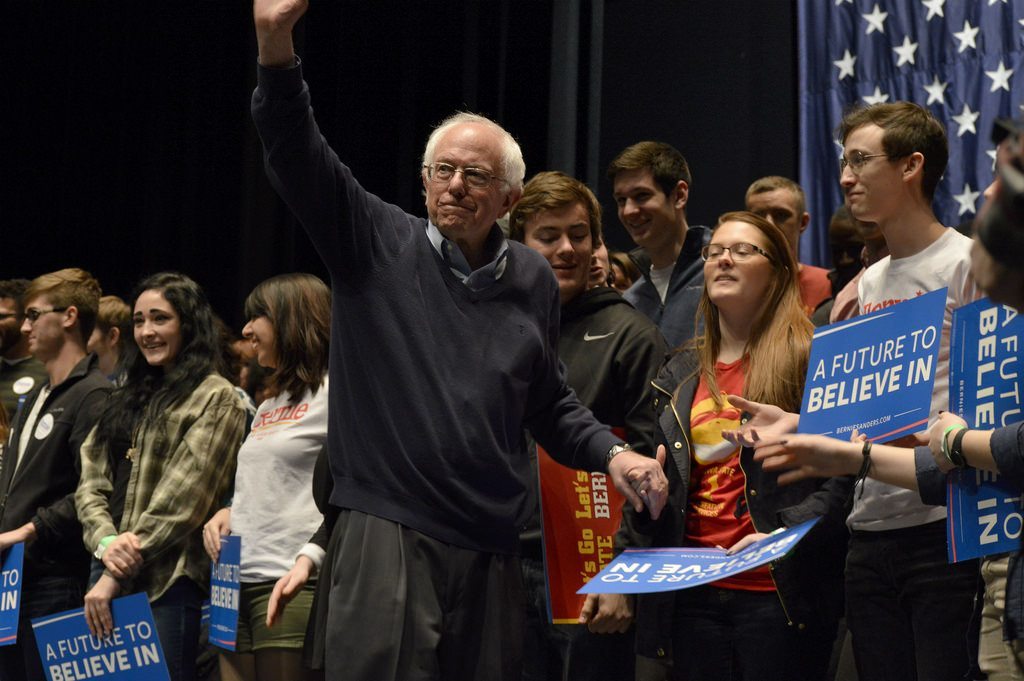Bernie Sanders ended his speech last night with this:
My hope is that when future historians look back and describe how our country moved forward into reversing the drift toward oligarchy, and created a government which represents all the people and not just the few, they will note that, to a significant degree, that effort began with the political revolution of 2016.
While I don’t begrudge him the hope that his presidential candidacy will have an impact on how our country moves forward, it has long been my contention that the sentence of history doesn’t contain periods (as in punctuation). Most every cultural or political change in direction has its antecedents in previous movements.
If we want to study what led to the trajectory of the rise of liberalism that we are witnessing today, it might be more helpful to tack back to the Reagan era of the 1980’s when the right was dreaming of a “permanent Republican majority.” I remember the relief with which some of us celebrated the election of Bill Clinton in 1992 with hopes that all of that had come to an end. It’s true that much of the march to the right was halted. But Clinton didn’t attempt to change the trajectory of American politics so much as he tried to co-opt it. That’s what we mean when we talk about triangulation.
The Clinton years were followed by the re-emergence of the right with the election of George W. Bush. It is important to remember that it was the atrocities of these years that mobilized the left. The outrage was captured by the emergence of technology and social media as the means to organize. Howard Dean built on all of that in his presidential campaign in 2004, but ultimately failed to capture the nomination. Too often we forget to mark the importance of the 2006 midterm elections where Democrats were successful in channeling the anger to win an additional 6 seats in the Senate and 31 in the House – taking back control Congress.
Barack Obama provided a liberal alternative to the devastation of the Bush years and mobilized a whole new coalition for Democrats. I’m old enough to remember the days when political pundits would wring their hands in long conversations about how Democrats would never win the White House without being successful in at least a few Southern red states. The assumption was that both Clinton and Carter demonstrated that it required that their nominee come from the South (i.e., Georgia or Arkansas). Barack Obama not only broke the mold as the first African American president. He also showed that a candidate from Illinois (and Hawaii) could win by building on Dean’s record of raising small donations on the internet, utilizing community organizing strategies to mobilize an effective ground game and putting together a diverse coalition who were energized to vote. It was that combination that led to the rare event of an “insurgent” candidate not only winning against the “establishment” in the primary – but also winning the general election.
Of course, as soon as an “insurgent” is elected as president, he automatically becomes the “establishment.” So it is no surprise that over the course of the next few years a group of liberals became disappointed in President Obama. He was also challenged by the need to clean up the mess left by his predecessor as well as the total obstruction he faced from Congressional Republicans. But the record of liberal achievements speaks for itself. And the prospect going forward for the new Democratic coalition has changed the trajectory of presidential elections for the foreseeable future.
Since President Obama was elected (and re-elected), we’ve seen other moments when this movement towards the left gained additional steam. I would remind you that when Elizabeth Warren was elected to the Senate and Bill De Blasio became the mayor of New York City, there was a whirlwind of talk about a rising “new” progressive movement. That was followed by the Sanders campaign.
Changing demographics have played a critical role in this movement to the left. That includes not only the rising influence of people of color and young voters, it is also a result of the growing clout of working and/or single mothers who have feminized the Democratic agenda.
I suspect that when historians look back on how American politics moved to the left, all of these factors will be included in their analysis.



